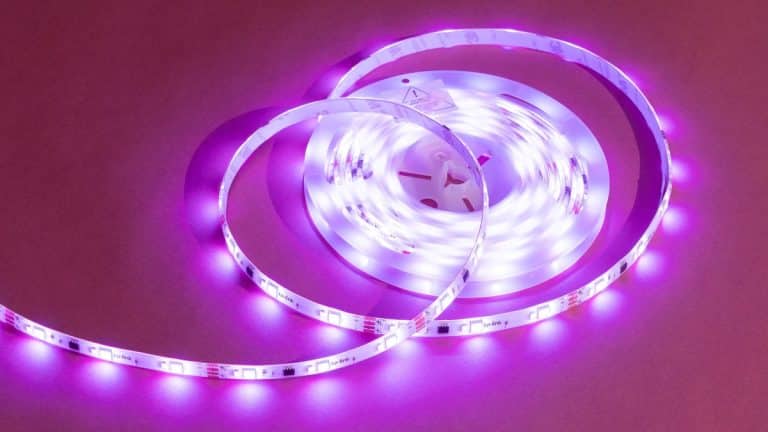LED strip lights have revolutionized lighting design, offering a versatile and energy-efficient solution for various settings, from residential to commercial. Sourcing the right LED strip lights wholesale involves several critical factors to ensure you choose high-quality products that meet your specific needs. This guide will walk you through the essential criteria for sourcing high-quality LED strip lights in bulk.
Contents
Understanding LED Strip Lights
Before delving into the sourcing process, it’s essential to understand what LED strip lights are and their benefits. LED strip lights are flexible circuit boards populated with light-emitting diodes (LEDs) that emit bright light with minimal energy consumption. They come in various colors, brightness levels, and can be used for both decorative and functional lighting purposes.
1. Determine Your Requirements
The first step in sourcing LED strip lights in bulk is to determine your specific requirements. Consider the following:
- Application: Are you using the lights for accent lighting, task lighting, or general illumination? The application will influence the type of LED strip lights you need.
- Brightness: Measure the lumens per meter to determine the brightness level. Higher lumens mean brighter light.
- Color Temperature: Decide on the color temperature (measured in Kelvin) that suits your environment. Warm white (2700K-3000K) is ideal for cozy settings, while cool white (5000K-6000K) is better for task lighting.
- Color Options: LED strip lights come in single-color, RGB (red, green, blue), or RGBW (RGB with white) options. Choose based on the desired lighting effect.
- Length and Size: Measure the area where you plan to install the lights to determine the necessary length and size of the LED strips.
2. Check the Quality of LEDs
Not all LEDs are created equal. The quality of the LEDs used in the strip lights significantly impacts their performance and lifespan. Here are some key factors to consider:
- LED Type: SMD (Surface Mounted Device) LEDs are commonly used in strip lights. Popular types include SMD 3528, SMD 5050, and SMD 5630, each with varying sizes and brightness levels.
- LED Density: LED density refers to the number of LEDs per meter. Higher density means more LEDs, resulting in brighter and more uniform light. Common densities include 30, 60, and 120 LEDs per meter.
- Chip Quality: Ensure the LED chips are from reputable LED strip lights manufacturers known for producing high-quality, durable LEDs.
3. Evaluate the Strip Material
The material of the LED strip itself affects its durability and performance. Look for the following:
- PCB (Printed Circuit Board): A thicker PCB ensures better heat dissipation and durability. Typically, a 2-ounce or 3-ounce copper PCB is recommended.
- Flexibility: The strip should be flexible enough to bend around corners without damaging the circuit.
- Adhesive Backing: A strong adhesive backing is crucial for easy and secure installation.
4. Consider the Power Supply
The power supply is a critical component of LED strip lights. Ensure that the power supply matches the voltage and wattage requirements of your LED strips. Key considerations include:
- Voltage: Common voltages for LED strip lights are 12V and 24V. Ensure your power supply matches the strip voltage.
- Wattage: Calculate the total wattage required by multiplying the length of the strip by the wattage per meter. Choose a power supply with a wattage capacity higher than the total requirement to ensure reliability.
- Dimmability: If you need dimmable lights, ensure the power supply supports dimming functions.
5. Assess the IP Rating
The Ingress Protection (IP) rating indicates the strip lights’ resistance to dust and water. Choose an IP rating based on the installation environment:
- IP20: Suitable for indoor use in dry areas.
- IP65: Offers protection against dust and water jets, ideal for kitchens and bathrooms.
- IP67/IP68: Waterproof options for outdoor use or areas with high moisture levels.
6. Verify Certifications and Compliance
High-quality LED strip lights should have relevant certifications and comply with industry standards. Look for certifications such as CE, RoHS, and UL, which ensure the products meet safety and environmental standards.
7. Review the Warranty and Support
A reliable warranty and customer support are indicators of a trustworthy supplier. Check the warranty period and the terms and conditions. A longer warranty typically signifies confidence in the product’s quality.
8. Compare Prices and Suppliers
When buying in bulk, it’s essential to compare prices from different LED strip lights suppliers. However, avoid the temptation to choose the cheapest option without considering quality. Look for suppliers with positive reviews, a proven track record, and excellent customer service. Request samples if possible to assess the quality before making a bulk purchase.
9. Evaluate Customization Options
Professional LED strip lights suppliers often offer customization options. This can include custom lengths, specific color temperatures, or unique mounting solutions. Customization ensures the LED strips meet your precise needs and can enhance the overall lighting effect.
10. Plan for Installation and Maintenance
Consider the installation process and the ease of maintenance. Professional suppliers should provide clear installation guides and support. Additionally, check if replacement parts or accessories are readily available from your chosen LED strip lights supplier.
Exploring LED Modules Supplier Options
If your project requires more specialized lighting solutions, consider sourcing from LED modules suppliers. LED modules are pre-configured lighting units that offer precise control and customization for specific applications. Working with a reputable LED modules supplier can ensure you receive high-quality components tailored to your needs.
Conclusion
Sourcing high-quality LED strip lights in bulk involves careful consideration of various factors, from the quality of the LEDs and materials to the power supply and IP rating. By thoroughly evaluating your requirements and comparing LED strip lights suppliers, you can ensure you choose high-quality LED strip lights that meet your needs and provide reliable performance. Remember to verify certifications, review warranties, and plan for installation and maintenance to achieve the best results. Investing in high-quality LED strip lights will enhance the aesthetics and functionality of your space while providing energy-efficient lighting solutions.

